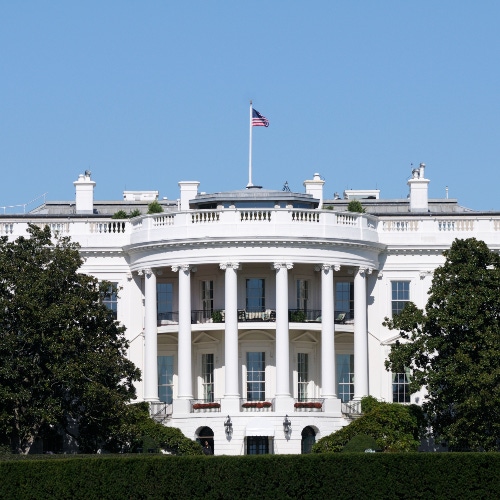5G proponents fret over Biden's fiber fancy
New federal guidelines put an emphasis on fiber networks: 'The program prioritizes projects designed to provide fiber connectivity directly to the end user.' And that's not sitting well with some 5G proponents.

The US government on Friday released some guidelines on how US states should dole out $42.5 billion for broadband services in rural areas.
"Thanks to President Biden's Bipartisan Infrastructure Law, Americans across the country will no longer be held back by a lack of high-speed Internet access," US Commerce Secretary Gina Raimondo declared in a statement.
However, those guidelines put an emphasis on fiber networks: "The program prioritizes projects designed to provide fiber connectivity directly to the end user," according to the document. And that's not sitting well with some 5G proponents.
"Fiber is an important input to support the deployment of 5G and successor wireless technologies throughout the US, but in areas where fiber is not possible, wireless will play a key role," argued the Competitive Carriers Association (CCA), which represents many of the nation's smaller wireless network operators, in a statement. "To meet the communications needs of Americans everywhere, it is important for policymakers to ... support ubiquitous access to fixed and mobile wireless services in the US."
Figure 1:  The White House south facade.
The White House south facade.
(Source: Martin Shields/Alamy Stock Photo)
Others agreed that the new guidelines – released by the Commerce Department's National Telecommunications and Information Administration (NTIA) agency – overly favor fiber.
"It is hard to reconcile the NOFO's [Notices of Funding Opportunity, which are the guidelines from the NTIA] explicit preference for one broadband technology with the requirement in the law for technological neutrality," said Wireless Infrastructure Association CEO Jonathan Adelstein in a statement. The group primarily represents the nation's cell tower owners.
"Fixed wireless will play a vital role in bridging the digital divide, as demonstrated by the accelerated nationwide deployment of 5G and the rapidly increasing market share of wireless home broadband," CTIA's Meredith Attwell Baker said in a statement. The association represents some of the nation's big wireless network operators, including Verizon, which is in the midst of a major fixed wireless buildout. "We look forward to working with the states as they seek to bring the unique capabilities of wireless to the nation, in fulfillment of congressional priorities."
The Wireless Internet Service Providers Association (WISPA, which represents mostly smaller fixed wireless access Internet providers) offered a relatively positive outlook on the new guidelines.
"WISPA is encouraged that the NOFO provides states with the maximum latitude to meet the unique needs and challenges they face in delivering broadband services. This means state broadband officials can select the right tool for the right job, minimizing delay and optimizing the use of limited taxpayer dollars. WISPA agrees that this adaptable, technologically neutral approach is the best way to realize the promise of the ... program," the association said in a statement. "WISPA's members provide broadband services and solutions to millions across the country, using fixed wireless, fiber and hybrid network delivery methods."
In the NTIA's Broadband Equity, Access, and Deployment (BEAD) guidelines, the agency defines "reliable broadband access" as networks using fiber, cable, DSL and "terrestrial fixed wireless technology utilizing entirely licensed spectrum or using a hybrid of licensed and unlicensed spectrum."
However, the agency defines "Priority Broadband Projects" as those that use "end-to-end fiber-optic architecture."
Continued the NTIA: "Only end-to-end fiber will 'ensure that the network built by the project can easily scale speeds over time to … meet the evolving connectivity needs of households and businesses' and 'support the deployment of 5G, successor wireless technologies, and other advanced services.' End-to-end fiber networks can be updated by replacing equipment attached to the ends of the fiber-optic facilities, allowing for quick and relatively inexpensive network scaling as compared to other technologies. Moreover, new fiber deployments will facilitate the deployment and growth of 5G and other advanced wireless services, which rely extensively on fiber for essential backhaul."
Not surprisingly, Gary Bolton, CEO of the Fiber Broadband Association, called the NOFO "one of the first steps in a complex but exciting opportunity to close the digital equity gap once and for all."
However, the NTIA does leave the door open to other types of networking technologies in certain situations.
To participate in the NTIA's BEAD program, states and other eligible entities must first submit a letter of intent and a planning budget. That then unlocks $5 million in planning funds and allows states to begin creating a five-year action plan. "Each participating state is guaranteed a minimum $100 million allocation, with additional funding determinations made based on the forthcoming coverage maps from the Federal Communications Commission," said the NTIA in a release.
Related posts:
— Mike Dano, Editorial Director, 5G & Mobile Strategies, Light Reading | @mikeddano
About the Author(s)
You May Also Like












